Culturing CHO Cells: Techniques and Applications
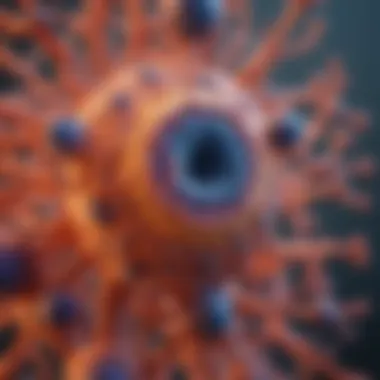
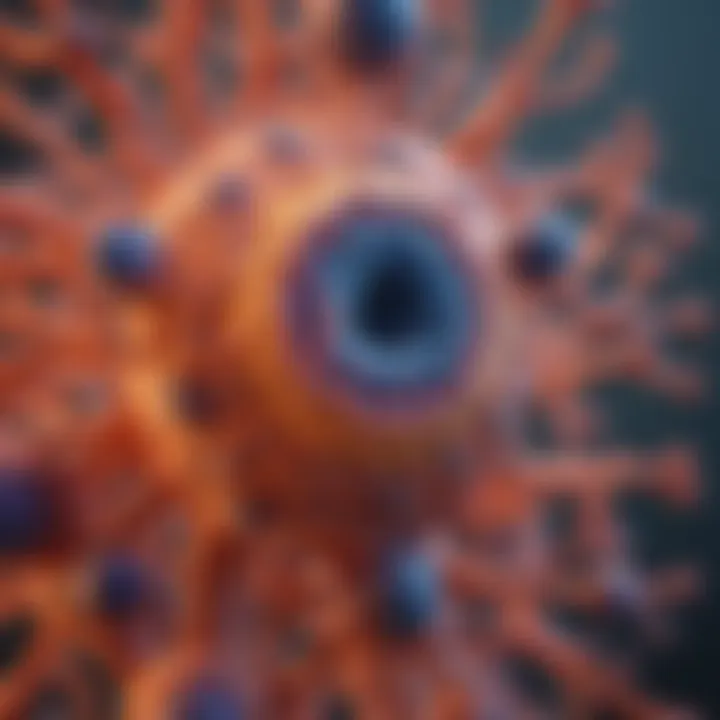
Intro
Culturing Chinese Hamster Ovary (CHO) cells plays a crucial role in the biopharmaceutical industry. These cells are not just any ordinary cells; they stand at the forefront of producing therapeutic proteins that can save lives. As we dive into this article, we will explore the significance of CHO cells in research, the various techniques utilized, and the applications that stem from their use in labs and production facilities.
The importance of this topic cannot be overstated. In an era where biopharmaceuticals are rapidly developing, understanding the nuances of CHO cell culture is paramount for students, researchers, and industry professionals alike. Whether you are looking to grasp the foundational principles or seeking advanced strategies to tackle common challenges in cell culture, this article aims to be your go-to resource.
By dissecting the various aspects of CHO culture—such as cultivation techniques, regulatory considerations, and advancements in technology—we intend to provide a well-rounded perspective that caters to the needs of both newcomers and seasoned hands in the field.
Intro to CHO Cells
As the backbone of biopharmaceutical production, Chinese Hamster Ovary (CHO) cells are widely utilized in the biotechnology realm. Their significance cannot be overstated; they offer a platform for producing proteins that are critical for therapeutic applications. The versatility of CHO cells positions them at the center of many advanced research and production pipelines.
Research focused on CHO cells explores their foundational characteristics, innovative culturing techniques, and the crucial roles they play in various applications like monoclonal antibody production and vaccine development.
In this article, we embark on an in-depth journey through the intricacies of culturing CHO cells. Here, we will delve into the historical development of these cells, their unique traits, and their vital importance in the fast-paced world of biotechnology. Understanding CHO cells provides insights into not just cell culture practices, but also the profound impact on health and medicine.
Historical Background
CHO cells were originally derived in the 1950s from the ovarian tissue of Chinese hamsters (Cricetulus griseus). Early efforts in cell culture focused on establishing a stable cell line that could support high-level protein expression. This laid the foundation for a new era in biotechnology.
In the decades that followed, advancements in cell culture techniques rapidly enhanced the capabilities of CHO cells. By the late 1970s, the advent of recombinant DNA technology accelerated their use in producing biological products. Notably, the first recombinant protein produced in CHO cells was human insulin, marking a significant milestone that forever altered the landscape of pharmaceuticals.
Characteristics of CHO Cells
CHO cells possess several distinctive features that make them highly suited for biopharmaceutical production. They are capable of post-translational modifications similar to those that occur in human cells, which is crucial for ensuring that therapeutic proteins maintain their functionality and efficacy.
Some key characteristics include:
- Adaptability: They can thrive in a variety of culture conditions, including serum-free environments.
- Growth Rate: CHO cells have a relatively fast doubling time, which allows for efficient scaling in production processes.
- Longevity: They can be maintained in culture for extended periods, ensuring a consistent supply for research and therapeutic applications.
The traits of CHO cells not only ensure a high yield of the desired proteins but also offer researchers the flexibility to manipulate them genetically.
Significance in Biotechnology
In the context of biotechnology, the importance of CHO cells cannot be overlooked. They serve as a reliable workhorse for the development of numerous biopharmaceuticals. More than 70% of therapeutic proteins currently on the market are produced using CHO cell lines.
This widespread use can be attributed to several factors:
- Robustness: CHO cells readily adapt to various production conditions and are resilient against contamination.
- Compliance with Regulations: The established safety and regulatory standards associated with CHO cells make them a favored choice for commercial production, aligning with Good Manufacturing Practices (GMP).
- Diverse Applications: From monoclonal antibodies to vaccines, CHO cells enable the production of a wide range of therapeutic molecules, contributing significantly to global health care solutions.
"As researchers continue to explore the potential of CHO cells, their contributions to drug discovery and development remain a cornerstone of modern biotechnology."
In summary, the introduction of CHO cells has fundamentally reshaped the landscape of biotechnology, paving the way for innovations that continue to save lives and improve health outcomes globally.
Fundamentals of Cell Culture
The realm of cell culture serves as the bedrock for understanding biological processes and developing novel therapies. Within this article, the section on Fundamentals of Cell Culture holds paramount significance. It lays the groundwork by addressing key elements that define efficient culturing practices. Grasping these fundamentals is essential for all practitioners, whether novices or seasoned researchers, to ensure they can optimize their experiments and contribute meaningfully to biotechnological advancements and biopharmaceutical production.
Basic Concepts of Cell Biology
At the heart of cell culture lies the intricate world of cell biology. Understanding the structure and functions of cells is not only crucial but also a prerequisite. Cells can be seen as tiny factories, each operating under specific conditions to thrive. They possess membranes that regulate their internal environment, organelles that perform metabolic functions, and genetic material that drives everything from replication to response to stimuli. By knowing these basic concepts, one can better manipulate conditions to favor growth, productivity, and desired outcomes when working with CHO cells.
Essential Culture Requirements
To successfully cultivate cells, certain requirements must be met. This involves not only providing nutrients but also ensuring optimal environmental conditions. Three particular aspects cannot be overlooked: Nutrient Medium, Growth Factors, and Environmental Conditions.
Nutrient Medium
Nutrient Medium serves as the lifeline for CHO cells. It provides the necessary nutrients, vitamins, and minerals that are critical for maintaining cell metabolism and proliferation. The selection of an appropriate nutrient medium can make or break a culture. Generally, formulations such as DMEM or RPMI 1640 are the go-to choices. They are well-rounded, catering to a wide variety of cell types while supporting high cell densities, which is often essential in biopharmaceutical applications.
- Key Characteristics: Versatile composition that includes essential amino acids.
- Why It's Beneficial: A favorite among researchers for its broad applicability and established protocols.
- Unique Features: Allows for the addition of supplements such as serum or specific growth factors, providing flexibility based on needs.
- Advantages/Disadvantages: While nutrient media can be tailored, they can also introduce variability into the results if compositions are changed frequently, which sometimes leads to inconsistencies.
Growth Factors
Growth Factors are another critical component in the dance of cell culture. These are specific proteins that promote cell growth and proliferation. For CHO cells in particular, erythropoietin and insulin are commonly utilized growth factors. Adding these factors can enhance cell survival, increase fusion efficiency, and promote better product yields in therapeutic protein production.
- Key Characteristics: Signaling molecules that initiate cellular responses.
- Why It's Beneficial: Essential for maintaining optimal growth and functionality of CHO cells under in vitro conditions.
- Unique Features: They exhibit specificity, meaning different cell types require different factors, which can add complexity to culture setups.
- Advantages/Disadvantages: While they generally improve yields, they can also increase costs and become another variable to monitor.
Environmental Conditions
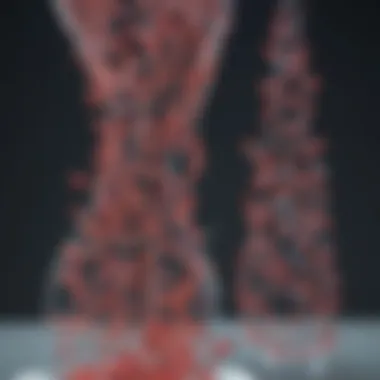
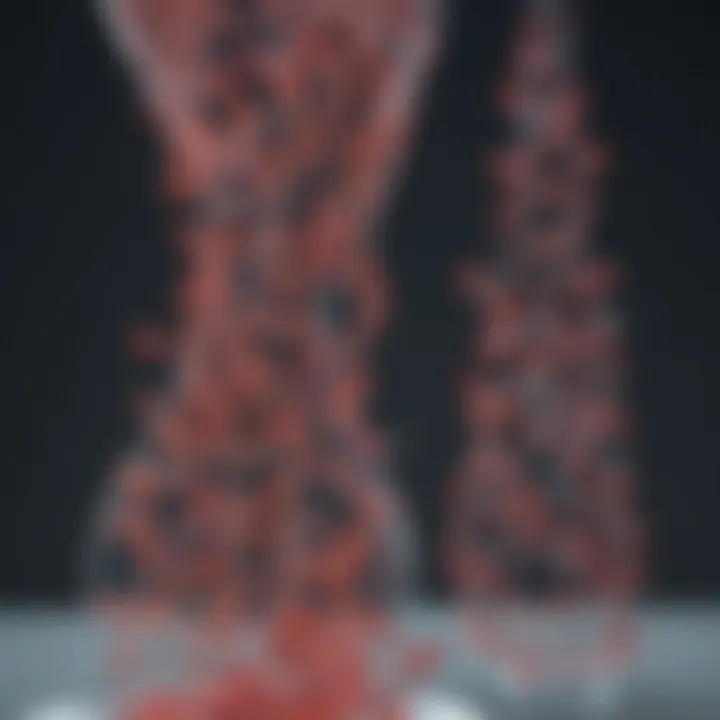
Environmental Conditions—like temperature, pH, and oxygen levels—are vital for successful cell cultures. For CHO cells, maintaining a consistent temperature of around 37°C is standard, while pH is often buffered between 7.2 and 7.4, mimicking physiological conditions closely.
- Key Characteristics: Direct impact on metabolic activities and cell morphology.
- Why It's Beneficial: Properly tuned environmental conditions can lead to enhanced viability and productivity.
- Unique Features: The incorporation of gas exchange and humidity control mechanisms can result in a more stable growth environment.
- Advantages/Disadvantages: Tight control of these factors demands sophisticated equipment, which may not be readily accessible in smaller setups or laboratories.
In essence, mastering the fundamentals of cell culture leads to enhanced productivity, minimizes risks, and empowers researchers to achieve their experimental objectives with CHO cells more effectively.
By delving into these foundational elements, researchers can position themselves for success. Understanding how to manipulate nutrient media, growth factors, and environmental conditions indeed sets the stage for optimized cell culture practices and improved outcomes in applications such as biopharmaceutical production and research.
Techniques for Culturing CHO Cells
The cultivation of CHO cells is an essential process that underpins a wide range of biopharmaceutical developments. Understanding the techniques involved in CHO cell culture provides researchers with the tools to maximize yield, maintain cell health, and efficiently produce therapeutic products. These techniques are not merely procedural; they embody the principles of cellular biology and the practicalities of engineering effective bioprocesses. Choosing the right technique can greatly impact factors such as growth rates, metabolic activity, and the consistency of protein production.
Static Cultivation Methods
Static cultivation methods are among the simplest approaches to cell culture. They typically involve growing cells in flasks or petri dishes under a constant environment. This technique allows for manual monitoring and adjustments to the conditions, making it an essential choice for initial experiments and small-scale work. The lack of agitation can be a double-edged sword; while it minimizes shear stress on the cells, it might lead to uneven nutrient distribution and oxygen depletion if not managed correctly.
Key Points:
- Simple setup, ideal for primary cultures or small projects.
- Limited scaling up; best for preliminary experiments.
- Easier to monitor and control environmental variables.
Suspension Cultivation Techniques
Suspension culture techniques, on the other hand, enable CHO cells to grow in a liquid medium, which provides a more dynamic environment. This method typically results in higher cell densities, making it useful for large-scale production.
Shake Flasks
Shake flasks are a widely-used method of suspension cultivation. The fundamental concept here is to mechanically agitate the culture fluid, providing cells access to nutrients and oxygen. This technique is especially beneficial during the early stages of culture development.
- Contribution to Production: Shake flasks are particularly beneficial for experimenting with different culture conditions before scaling up. This allows researchers to identify optimal conditions without the vast resources that larger systems require.
- Key Characteristics: They can be easily sterilized and reused, making them a cost-effective solution for various experiments.
- Unique Features: The main advantage of shake flasks is their simplicity. Researchers can manipulate environmental variables such as temperature and pH with relative ease. However, the disadvantages include potentially lower yield compared to larger systems.
Bioreactors
In contrast to shake flasks, bioreactors represent a more advanced and controlled environment for CHO cell culturing. These systems are designed to provide a highly regulated environment for cell growth, including precise control over temperature, pH, and oxygen levels.
- Contribution to Production: Bioreactors support continuous monitoring and adjustment, which is crucial for large-scale production. They are essential for commercial biopharmaceutical productions, where consistency is paramount.
- Key Characteristics: Unlike shake flasks, bioreactors can maintain high cell densities while minimizing shear stress, which can be detrimental to cell health.
- Unique Features: Bioreactors integrate multiple features such as oxygenation systems, sensors, and controllers. The main advantage lies in their scalability; however, they come with higher costs and complexity in setup and maintenance.
Two-Dimensional vs. Three-Dimensional Culturing
The choice between two-dimensional and three-dimensional culture systems also plays a pivotal role in CHO cell cultivation. Traditional two-dimensional culturing involves growing cells on flat surfaces and provides valuable data during the initial stages of research. However, three-dimensional culturing has gained traction due to its ability to mimic in vivo conditions more closely, enhancing understanding of cell behavior in a realistic environment.
In many cases, three-dimensional cultures have been observed to yield more physiologically relevant data, making them a promising avenue for future research and application.
For bioprocessing needs, the choice between static, suspension, two-dimensional, or three-dimensional approaches needs to align with the specific goals of the cultivation process. Each technique carries its own set of advantages and challenges, demanding thoughtful consideration from researchers aiming to harness the full potential of CHO cells.
Applications of CHO Cell Culturing
The applications of CHO (Chinese Hamster Ovary) cell culturing are crucial, given their significant role in the biopharmaceutical landscape. As researchers seek innovative therapies, these cells provide a reliable platform for producing a range of biological products. The importance of this topic cannot be overstated; understanding the practical applications of CHO cells aids in grasping how modern medicine is evolving amid increasing patient demands and scientific advancements.
Production of Biopharmaceuticals
Biopharmaceuticals, particularly monoclonal antibodies and recombinant proteins, are at the forefront of therapeutic interventions. CHO cells serve as the backbone for their production due to their superior ability to perform post-translational modifications, which are vital for the functionality of many drugs.
Monoclonal Antibodies
Monoclonal antibodies have revolutionized treatment strategies for various diseases, including cancer and autoimmune disorders. They are basically engineered to target specific antigens with remarkable precision, making them an essential choice in immunotherapy. The key characteristic that sets monoclonal antibodies apart is their high specificity—they bind to only one type of antigen, reducing the potential for off-target effects and enhancing therapeutic efficacy.
A unique feature of monoclonal antibodies is their ability to evoke strong immune responses. However, producing these proteins in CHO cells can be intricate due to the required glycosylation patterns that affect their activity. For instance, a common disadvantage is the potential inconsistency in glycosylation, which can influence the therapeutic effectiveness. Yet, the overall benefit of their targeted action and adaptability keeps them as a rock-solid choice in the biopharmaceutical industry.
Recombinant Proteins
Recombinant proteins represent another vital application of CHO cell culture. These proteins, produced through the insertion of foreign DNA into the CHO cell genome, play critical roles in diagnostics and therapy. A fundamental aspect of recombinant proteins is their versatility. They can be engineered to possess unique properties suited for specific therapeutic targets, allowing for innovation on multiple fronts.
The essential characteristic of recombinant proteins lies in their ability to mimic human proteins closely. This similarity enhances their safety and efficacy when administered to patients. One notable feature is their consistent production in a controlled environment, which mitigates variability issues that could arise in other systems. Yet, achieving the desired levels of protein expression can be challenging, making optimization an ongoing process. The advantages of their tailored design coupled with the challenges of production reflect the dynamic nature of biopharmaceutical applications.
Gene Therapy Research
Gene therapy represents a frontier in medical science with the potential to correct genetic disorders at their source. CHO cells are implicated in this approach, as they provide an efficient platform for producing viral vectors necessary for delivering therapeutic genes. Their ease of culture and ability to maintain transgene stability make CHO cells a preferred choice for this application.
As gene therapy evolves, the flexibility of CHO cells allows researchers to refine their methods and improve the safety profiles of these gene constructs. Continued exploration is likely to result in enhanced techniques in both generating the vectors and ensuring they function optimally in vivo.


Vaccine Development
The role of CHO cell culturing in vaccine development cannot be overlooked, particularly in light of recent global health crises. These cells are increasingly being utilized for producing viral components and other vaccine elements. The ability of CHO cells to grow in suspension and adhere can be beneficial in large-scale vaccine production processes.
One significant advantage is their safety record; since CHO cells are non-human, the risk of transmitting human viruses is reduced, promoting safer vaccine development. The adaptability to various culture conditions opens the door for rapid scale-up capabilities, which is essential in responding to emergent threats effectively.
"CHO cells bridge the gap between scientific innovation and tangible medical solutions, showcasing their indispensable role in modern biopharmaceutical applications."
Optimizing CHO Cell Cultivation
In the pursuit of effective biopharmaceutical production, optimizing the cultivation of Chinese Hamster Ovary (CHO) cells stands out as a crucial endeavor. Proper optimization not only boosts cell growth and productivity but also enhances the overall efficiency of product development cycles. As biotechnological applications become more advanced and demanding, cultivating CHO cells efficiently becomes paramount to meet the commercial and therapeutic needs of the industry.
The focus here lies in understanding various elements of cultivation, such as enhancing metabolic pathways and refining culture conditions. By diligently addressing these areas, researchers can maximize yield while maintaining the desired quality of the bioproducts.
Enhancing Cell Growth and Productivity
Enhancing cell growth and productivity goes beyond mere luck; it requires a calculated approach. Refined strategies, like metabolic engineering and culture media optimization, play key roles in achieving elevated cell density and product yields. Understanding the mechanisms involved in these practices can lead to innovative techniques that push the boundaries of cell culture efficacy.
Metabolic Engineering
Metabolic engineering refers to the targeted modification of cellular pathways to optimize the production of desired compounds. This technique centers on a fundamental characteristic: its ability to enhance the metabolic flux of specific pathways within CHO cells. By fine-tuning the cellular processes, researchers can increase the output of proteins or antibodies, thus shaping it into a favorable option for biopharmaceuticals.
A unique feature of metabolic engineering is its flexibility; it allows for the adjustment of not only cellular pathways but also the energy production as well. This can lead to substantial increases in cellular productivity, making it a widely endorsed approach in cell culture.
However, there are nuances to consider. While metabolic engineering has significant potential, it often requires meticulous design and experimentation to avoid unintended consequences on cell viability and product quality. A broader focus on cell health is needed to mitigate any disadvantages that arise from aggressive pathway manipulation.
Culture Media Optimization
Culture media optimization is another cornerstone in the effort to enhance the productivity of CHO cell cultures. The basic idea revolves around the precise formulation of the nutrient environment in which cells thrive. A key characteristic of this approach is its ability to directly influence cell behavior and product output.
Careful selection of media components—including amino acids, vitamins, and salts—can create a nourishing environment that supports optimal cell growth and function. This makes culture media optimization an attractive option for researchers looking to maximize yield and reduce costs in bioprocessing.
The benefits here are substantial. Optimized culture media can lead to significantly improved cell densities and higher protein production. However, there are drawbacks too; customizing media can be resource-intensive, requiring extensive testing and validation. Additionally, if the formulation is not properly balanced, it might lead to cell stress or even death, negating any potential advantages.
Reducing Cell Line Development Time
Reducing cell line development time is an area where optimization holds immense value. The ability to rapidly develop robust cell lines can drastically shorten the timeline from research to market. Strategies such as genetic modifications, along with efficient selection techniques, can significantly streamline this process.
Scale-Up Strategies
Finally, exploring scale-up strategies reveals the necessity for meticulous planning in transitioning from laboratory settings to commercial-scale production. It involves adapting techniques to larger volumes while preserving cellular characteristics and productivity.
This whole mix of optimization strategies not only fuels scientific advancements in CHO cell culturing but also translates to tangible benefits in terms of cost-efficiency, speed, and product quality, setting the stage for groundbreaking breakthroughs in therapeutic developments.
Challenges in Culturing CHO Cells
Culturing Chinese Hamster Ovary (CHO) cells is not just an exercise in petri dish mechanics; it’s a complex venture rife with obstacles that researchers face daily. These challenges can significantly affect outcomes in biopharmaceutical production and can be broadly categorized into three main issues: cell line stability, contamination risks, and bioprocess variability. Understanding these challenges provides invaluable insights into how to optimize cell culture practices and safeguard the integrity of work being done in laboratories.
Cell Line Stability Issues
The stability of cell lines is a fundamental concern in the context of CHO cell culture. Over time, even the most reliable cell lines may undergo genetic or phenotypic changes, which can lead to inconsistent outcomes. This inconsistency can be attributed to factors such as genetic drift, selective pressure during culturing, and even inadvertent human error in handling.
Key considerations include:
- Consistency in production: When cells are unstable, they can exhibit varying growth rates or produce different amounts of proteins, which makes standardization difficult.
- Impact on product quality: Variation in glycosylation patterns, for example, can lead to changes in drug efficacy or safety.
Researchers often employ strategies to enhance cell line stability. These can include routine characterization of the cell lines and implementing systems that monitor critical quality attributes throughout the culture process.
Contamination Risks
In any cell culture setting, contamination is akin to a dark cloud looming overhead. For CHO cells, this concern is particularly pronounced. Contamination can stem from microbial sources, including bacteria, fungi, and viruses, or from cross-contamination with other cell lines. Such intruders can not only jeopardize cell viability but can also lead to flawed experimental results.
To mitigate these risks, several preventative measures are crucial:
- Robust aseptic techniques: Maintaining stringent sterile conditions reduces the chances of contamination.
- Regular monitoring: Routinely checking for signs of contamination can catch issues before they escalate.
- Using validated reagents: Ensuring all culture mediums and supplements are free from contaminants is imperative for maintaining cell purity.
Furthermore, incorporating biosafety cabinets and utilizing personal protective equipment can also play a significant role in reducing the risk of unwanted contamination.
Bioprocess Variability
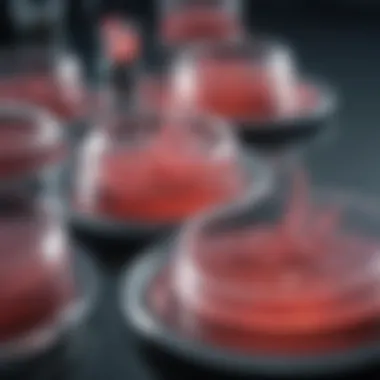
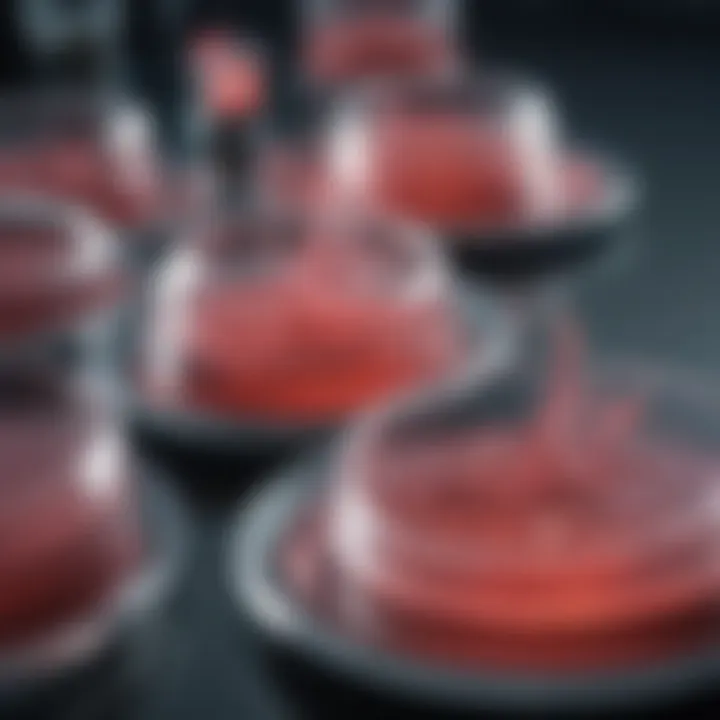
Bioprocess variability remains a significant hurdle in the culturing of CHO cells. This variability can arise from differences in environmental conditions, variations in raw materials, or even equipment performance. Inconsistent culture conditions can significantly impact the metabolic state of the cells, as well as their growth and productivity.
To address these challenges, practices that promote stability and consistency are essential:
- Standardized protocols: Developing and strictly adhering to standardized operating procedures can help in minimizing variability.
- Automation: The use of automated bioreactors allows for better control of culture conditions, thereby enhancing reproducibility.
- Real-time monitoring: Harnessing technology to continuously monitor parameters like pH, temperature, and dissolved oxygen levels can help in promptly identifying any deviations from optimal conditions.
In summary, addressing the challenges in culturing CHO cells involves navigating a myriad of intricate issues ranging from cell line stability to contamination risks and bioprocess variability. By implementing strategic measures and fostering a rigorous culture environment, researchers can mitigate these challenges and push forward in the extensive landscape of biopharmaceutical development.
Recent Advances in CHO Cell Technology
The realm of Chinese Hamster Ovary (CHO) cell technology has seen dynamic changes over the years. With the constant evolution of biotechnological needs, recent advances bring numerous benefits, not just for researchers but importantly for pharmaceutical production. As biopharmaceuticals continue to progress, understanding these advances becomes crucial. They enhance efficiency and create new avenues for therapeutics.
Innovations in Bioprocessing Techniques
Bioprocessing serves as the backbone of CHO cell cultivation. Innovations in this area focus on streamlining processes, reducing costs, and improving scalability. A standout development is the implementation of fed-batch and perfusion systems, which allow for continuous nutrient supply and waste removal. This ongoing management generates higher yields and maintains cell viability.
Additionally, the advent of automated bioreactors introduces a hands-free approach to cell culture, which diminishes human error and variability. The data generated from these systems can be harnessed using machine learning algorithms, optimizing parameters in real time based on performance metrics.
Furthermore, techniques such as single-use technology have gained traction. The ease and efficiency of using disposable systems significantly reduce cross-contamination risks, which is a common problem. All in all, the innovations in bioprocessing play a monumental role in transforming CHO cell culture into a more precise, efficient, and scalable endeavor.
Genetic Modifications and Their Impacts
Genetic modifications in CHO cells are a game changer. By altering specific genes, researchers can improve cell resilience, growth rates, and productivity. The introduction of CRISPR/Cas9 technology has revolutionized how we approach these modifications, allowing for more precise edits with reduced off-target effects.
One significant outcome of genetic engineering is the enhancement of glycosylation patterns, essential for the bioactivity and stability of therapeutic proteins. Adjustments can lead to improved efficacy and extended half-lives of the drugs produced. This ability to tailor glycosylation is vital for the development of effective monoclonal antibodies and other therapeutic agents.
Moreover, genetic modifications can also reduce production costs by improving cell line stability and expression levels. This not only benefits manufacturers but also helps in producing more affordable treatments.
The integration of advanced techniques in CHO cell culture is paving the way for breakthroughs that hold promise for the future of medicine.
The integration of both innovations in bioprocessing techniques and genetic modifications not only aids in addressing current biomanufacturing challenges but is also instrumental in setting a robust foundation for future developments in the field. The ongoing research in these areas highlights the importance of adaptability and innovation in the biotechnology sector, ultimately impacting global health standards positively.
Regulatory Considerations in Cell Culture Practices
In the realm of cell culture, particularly when culturing CHO cells, the regulatory environment is paramount. This sector is under close scrutiny due to the implications for human health and safety in biopharmaceutical production. The regulatory considerations shape the practices ensuring that they meet strict guidelines, ultimately fostering trust in the efficacy and safety of the produced biologics. As the industry grapples with complex challenges, understanding and adhering to these regulations become crucial for success.
Good Manufacturing Practices (GMP)
Good Manufacturing Practices, or GMP, form the backbone of regulatory compliance in cell culture. Essentially, GMP ensures that products are consistently produced and controlled according to quality standards. This principle is not merely a guideline, but often a legal requirement enforced by various regulatory bodies around the globe, including the U.S. Food and Drug Administration (FDA) and the European Medicines Agency (EMA).
Adhering to GMP involves:
- Documented Procedures: Establishing written protocols that outline each step in the cultivation process, from cell line thawing to harvest, ensures consistency and accountability.
- Quality Control: Regular testing and validation of raw materials and final products are necessary to verify their quality before reaching clinical trials or the market.
- Traceability: Maintaining detailed records of every batch of cells and their conditions enables transparency and aids in pinpointing sources of potential issues.
Implementing GMP not only helps in regulatory compliance but also enhances product quality. It's like putting a safety net under a high-wire act; the quality of the end product becomes more reliable, thereby protecting patient safety and effectively supporting the advancement of healthcare.
Regulatory Frameworks Governing Cell Culture
The regulatory frameworks governing cell culture are as intricate as a spider's web, intertwining various regulations and guidelines that span different countries and regions. Navigating these legal landscapes can be daunting, but understanding the key components is essential for every researcher or organization involved in CHO cell culture.
- International Guidelines: Organizations like the World Health Organization (WHO) and the International Conference on Harmonization (ICH) provide guidelines that promote consistent practices across borders. These documents serve as foundational elements in developing local regulations.
- Local Regulations: Each country may have specific requirements that reflect its healthcare environment. For example, in the United States, the FDA enforces regulations concerning the safety, efficacy, and quality of biopharmaceutical products derived from CHO cells.
- Ethical Considerations: Regulatory bodies also emphasize the ethical treatment of materials, including cell lines. Adhering to ethical practices not only supports compliance but also enhances public trust.
In summary, regulatory considerations are not just bureaucratic hurdles; they play a critical role in assuring the safety, efficacy, and quality of CHO cell-derived products. Emphasizing both GMP and the regulatory landscape fosters responsibility and innovation within the biotechnology sector, ultimately leading to advancements that benefit society as a whole.
"Adhering to regulatory frameworks isn't just about compliance; it's about commitment to excellence in biotechnology."
Being proactive in understanding and implementing these regulations will not only facilitate smoother operations but also ensure that the products of CHO cells contribute positively to global health.
Future Directions in CHO Cell Culture
As the landscape of biotechnology continues to evolve, the future directions in CHO cell culture present numerous possibilities. Understanding these elements can greatly benefit not just researchers, but also industries relying on biopharmaceutical production. With the increasing demand for biologics, comprehending emerging trends and the global health impacts of these developments is paramount.
Emerging Research Trends
Several promising research trends are embarking on the CHO cell culture scene. One notable area is the adaptation of CRISPR technology to enhance cell lines. This gene-editing tool enables precise modifications that can improve protein expression levels and stability. A notable example is the development of CHO cells that can better tolerate stressful conditions during large-scale production.
Additionally, researchers are exploring the integration of artificial intelligence in bioprocessing. Analytics powered by AI can lead to more efficient culturing practices through real-time monitoring and optimization. These technologies could revolutionize how we approach experimental design and cell growth monitoring, potentially leading to breakthroughs in yield and quality.
- Focus on optimizing cell metabolism is becoming a hot topic. By tweaking metabolic pathways, scientists are figuring out the best lighting conditions for photobioreactors, leading to improved growth and productivity.
- New platforms for three-dimensional cell culture allow for better mimicking of in vivo conditions, promising significant improvements in drug testing and development.
Impact on Global Health
The implications of enhanced CHO cell culture practices stretch far and wide, with a significant impact on global health. Enhanced production of biopharmaceuticals can lead to more effective therapies being developed and made accessible at lower costs. This is particularly crucial in regions where healthcare is already strained. By potentially speeding up the delivery of monoclonal antibodies and vaccines, CHO cells could play a central role in addressing global health crises.
Moreover, the production of therapeutic proteins through advanced CHO cell culture holds promise for personalized medicine. Tailored treatments stand to benefit from quicker turnaround times, offering patients access to life-saving treatments in crucial moments. This aligns well with the ongoing trends towards individualized healthcare approaches.
"By refining CHO cell methodologies, we not only boost biopharmaceutical yields but also pave the way for addressing some of humanity’s pressing health challenges."



